Use controls above or click here to open this Hometown Heroes podcast in a new window
97-year-old Simeon Deming of Visalia, CA appears on episode #460 of Hometown Heroes, reflecting on a military career that spanned more than four decades, from his Navy enlistment in 1937, to his retirement as an Air Force major in 1979.
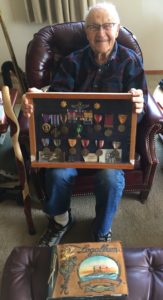
Deming grew up in Forest Grove, OR, and after the Eagle Scout graduated from high school in 1937, he decided to join the Navy. “Well there was no work, and you couldn’t find a job anyplace,” you’ll hear him recall of his motivation to enter the military. “That was three meals a day and a little bit of money in your pocket.” The teenager was assigned to the battleship USS Arizona (BB-39) as a radio operator. He wasn’t very fond of the hot, humid, and ostensibly dangerous position of his duty station. “It was in the bowels of the ship, clear at the bottom,” Sim explains.
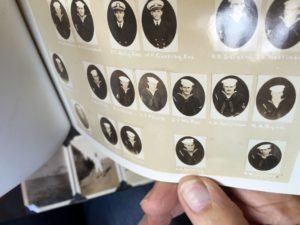
He transmitted radio messages to other ships, participated in practice drills that simulated wartime situations, and ended up in Pearl Harbor before leaving the ship when he completed his enlistment in July, 1940. Now 21 years old, Sim went to work as a head riveter at the Lockheed aircraft factory in Burbank, CA. He riveted together the wings of P-38 Lightning fighter-bombers, having no idea he would someday be in the cockpit of those very planes. Like so many veterans featured on Hometown Heroes, Deming has very vivid memories of December 7, 1941. Not only would his heart hurt for his former shipmates who were killed on the USS Arizona that day, but the event he was witnessing that day may have saved the life of his best friend from the battleship.
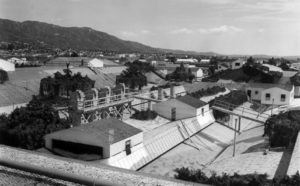
Joe Wildt was on leave from the USS Arizona so he could marry his sweetheart, Helen. Simeon Deming drove the couple to Las Vegas so they could tie the knot. They heard radio reports about the bombing, and heard the call for military personnel to return to their bases immediately. “He had no place to report back to,” Deming explains of his friend Joe.
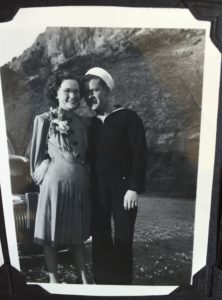
The Wildts’ newlywed elation was interrupted by the horror of 1,177 of Joe’s shipmates being killed in a surprise attack, with many more injured. It also became clear that deciding to get married at that precise time may have been a twist of fate that spared the sailor’s life. Sim Deming, too, had reason to reflect. Just 17 months earlier, he had been on the ship that was most devastated by the sneak attack. Every sailor in the duty station where he served was killed.
“I was awfully glad I wasn’t on it,” you’ll hear Deming explain. “You had some pretty bad feelings because so many of your old buddies were there.”
None of the men that Deming had developed close relationships with were able to escape the doomed vessel. “The only one that made it out was the one that was with me,” Sim says of his friend Joe. The sorrow and heartbreak of losing so many former shipmates soon turned to anger directed at the perpetrators. “You want to get a gun and go get ’em,” he says of feelings toward Imperial Japan in the aftermath of the tragedy. His work at Lockheed would have exempted him from military service, but he was determined to get even more intimately involved in the war effort.
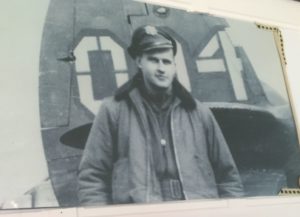
He attended Central Washington University to get the college credit required to enter pilot training in the Army Air Corps, and went on to fly the very planes he had been putting together in Burbank. Joining the 12th Photo Reconnaissance Squadron, part of the acclaimed 3rd Reconnaissance Group, he would fly 43 unarmed missions out of Italy. He was flying the F-5, a reconnaissance version of the P-38. “There’s a big difference,” Deming explains. “You don’t have those guns!” While a P-38 carried bombs and was equipped with machine guns, the F-5 had no armaments, just cameras. Click here to learn more about the work of “Photo Joes” like Sim Deming, who did learn that the photo recon version of the Lightning was faster than its weaponized counterpart, simply because it was lighter. Occasionally, his missions involved following closely behind Allied bombers to photograph the damage they inflicted. “By the time we got there,” Sim says. “The people were mad on the ground, and they were shooting at you.” The majority of the missions were pre-strike solo flights to photograph intended targets for the bombers to hit. Anti-aircraft fire was a frequent obstacle, as he circled and made multiple passes over his photographic subject. “The pictures were very important, so you stayed as long as you dared,” the pilot recalls. “When the shells got to coming through the canopy, you left.”
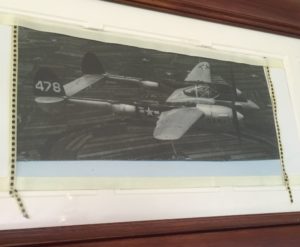
You’ll hear Sim detail two missions in which the flak, often so thick “you could get out and walk on it,” posed a problem. He says he doesn’t think he should have received the Purple Heart, but when you hear him explain wounds on his cheek, near his eye, and at the base of his skull, you might feel otherwise.
“This one came up through the bottom of the plane and exploded right in the cockpit,” he remembers. “I was very lucky that I just got little pieces of it.”
He tended to his wounds as best as he could and brought the plane in safely. Sim and his F-5 came home intact on 42 of his 43 missions, even when having to outrun enemy fighters, and on occasions when he came home with “a couple hundred holes in the wings.” On April 3rd, 1945, he finally encountered anti-aircraft fire that crippled his plane.
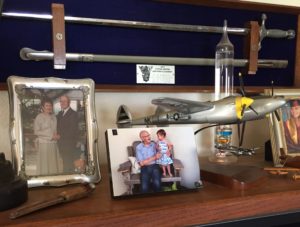
When his engines started to sputter, he knew he was in trouble. Sinking down from 25,000 feet to 10,000, he inverted the plane and dropped out of the cockpit. Pulling the ripcord after a few seconds, he parachuted down over the Italian countryside in broad daylight, hearing bullets whiz by before he landed. A nearby haystack caught his eye, and after bundling up his parachute, he crawled inside.
“I buried in there, and they looked for me there,” Deming explains. “But they didn’t find me.”
Listen to Hometown Heroes for his vivid recollections of that day, when he waited several hours for nightfall, and then snuck back roughly a mile to the American side of the line. Sim stayed in the military after World War II, becoming an instructor for fighter pilots who went on to fly in Korea and Vietnam. He stayed in the reserves until 1979, retiring with the rank of Major.
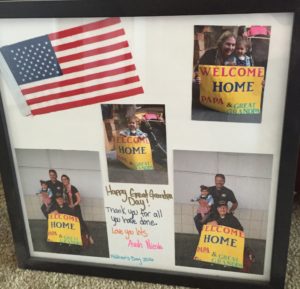
Sim and his wife, Mary, went on to raise two sons. The former scoutmaster and Little League coach now counts four grandchildren and four great-grandchildren. Asked to reflect on the family he’s been blessed with, in light of the close calls he survived during World War II, Sim attributes it to fate.
“Whatever the Old Man has lined up for us up there,” you’ll hear this 97-year-old say. “That’s the way it’s gonna happen.”
You’ll also hear briefly from Sim’s son, Paul, who accompanied him to the National World War II Memorial in Washington, D.C. with Central Valley Honor Flight. Sim hasn’t stepped into the cockpit of a P-38 in decades, but he’s confident he could still execute a Lightning-quick takeoff in his favorite plane. If you catch him on terra firm, please thank this remarkable veteran for his service to our country.
—Paul Loeffler



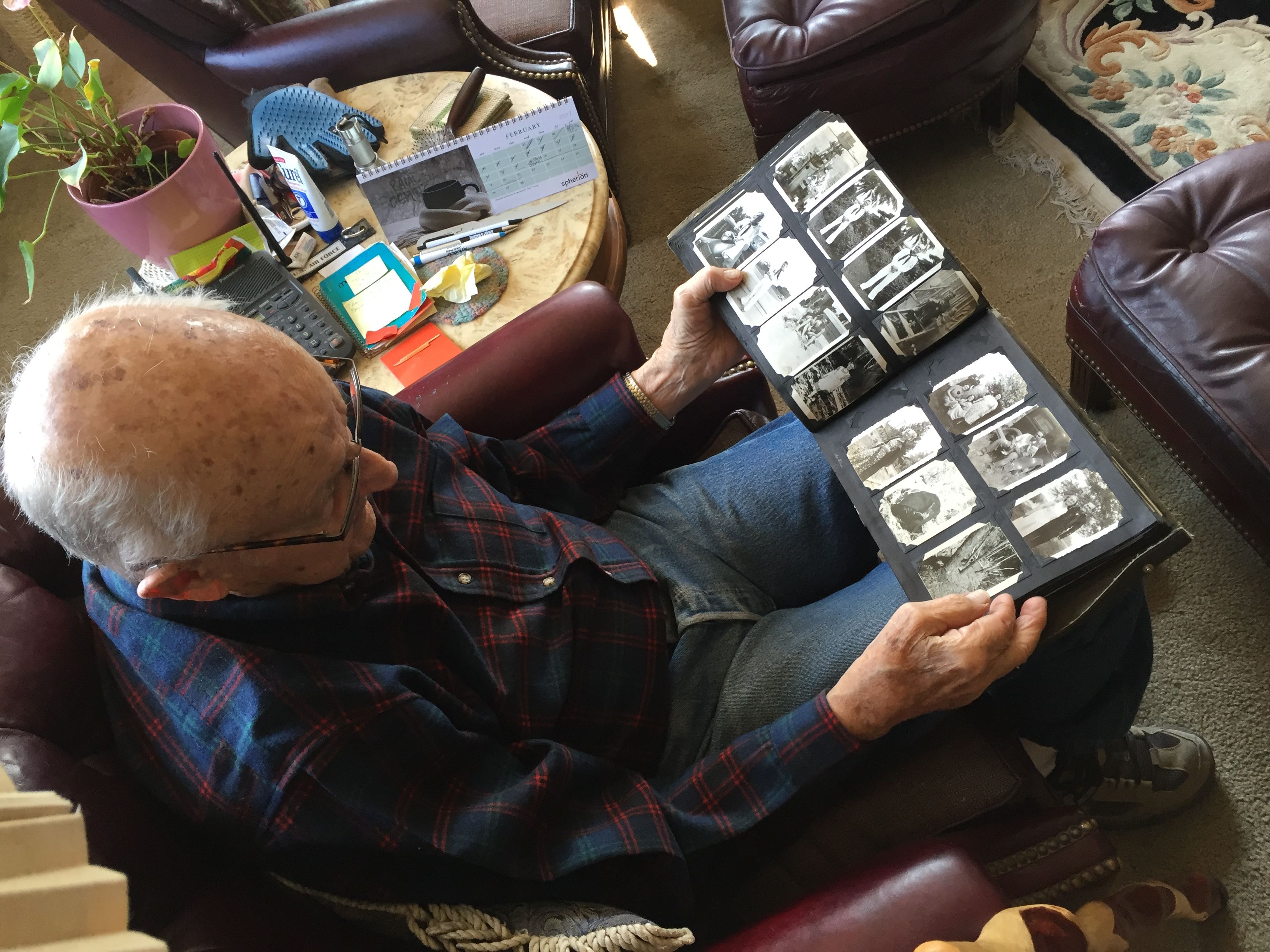
Leave a Reply